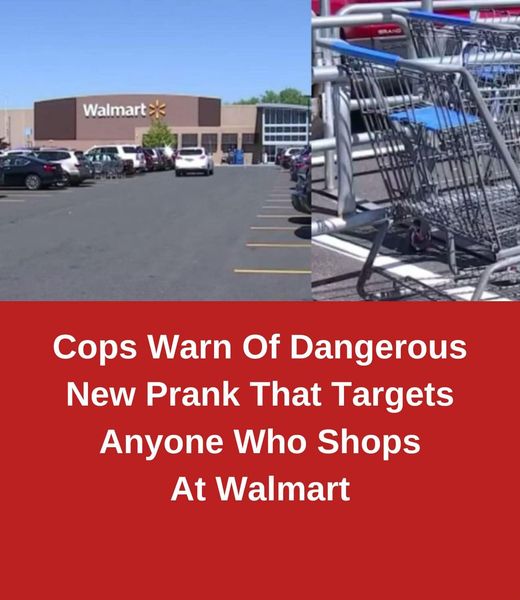A recent incident at a Walmart in Windsor, Connecticut, has sparked concerns about shopper safety, emphasizing the potential dangers that can arise in everyday situations. During a late-night trip, Cheryl and Mel Johnson made a startling discovery: a razor blade protruding from a shopping cart handle. While attempting to use the cart, Mel accidentally cut his hand on the hidden blade.

Alarmed by the unexpected injury, the Johnsons immediately reported the situation to the store manager, who responded quickly by inspecting all the carts in the store. Fortunately, no additional blades were found. However, the incident left both the couple and store officials shaken. Police investigating the matter suggested two possible motives: it could have been a dangerous prank aimed at harming shoppers or a tool used by shoplifters to remove security tags from items.
Unfortunately, this isn’t the first time something like this has happened. In 2015, a similar case occurred in North Dakota, where a shopper found a razor blade hidden on a cart handle. These incidents, while rare, underscore the need for vigilance among both consumers and retailers. The Johnsons, grateful that Mel’s injury was not severe, acknowledged that the outcome could have been much worse—especially if a child had been involved or if the blade had been rusty, increasing the risk of infection.
The incident serves as a wake-up call for consumers to exercise caution when using shopping carts. Experts recommend a quick inspection of cart handles before use to ensure they are safe. However, shoppers cannot bear the full responsibility for preventing such hazards. Retailers, particularly large chains like Walmart, must also take proactive measures to protect customers. This includes implementing enhanced security protocols, increasing staff training, and conducting regular inspections of shopping carts.
To improve shopper safety, stores can also introduce awareness campaigns that educate both staff and customers about potential dangers. Signs near cart return areas, routine announcements, and information on store apps could remind shoppers to check their carts for tampering before use. Implementing these measures could help prevent injuries and create a safer shopping environment.
In response to the Windsor incident, Walmart released a statement assuring the public that it is committed to customer safety. The company is currently reviewing its safety procedures and considering additional measures, such as more frequent cart checks and better surveillance in high-traffic areas. “The safety of our customers is our top priority,” a Walmart spokesperson said, emphasizing the importance of cooperation between shoppers and staff to address potential risks.
Many shoppers have taken to social media to discuss the incident, with some expressing concern over how such pranks could occur unnoticed. “It’s scary to think you could get hurt just by grabbing a cart,” one commenter wrote. Others suggested that more advanced technology, like tamper-resistant handles or built-in sensors, could be used to detect potential hazards on carts.
The Windsor incident has prompted a broader conversation about the responsibilities of retailers in ensuring a safe environment for shoppers. Some safety advocates argue that increased staffing and better surveillance in store entry areas could serve as effective deterrents against tampering with carts. Others propose that stores adopt a more community-focused approach, encouraging customers to report suspicious behavior immediately.
As discussions continue, it’s clear that safety in public spaces is a shared responsibility. Consumers must remain vigilant, but retailers must also prioritize safety by implementing robust security measures and responding swiftly to potential threats. Shoppers are encouraged to report any unusual findings to store management or local authorities to prevent future incidents.
While the razor blade incident at the Windsor Walmart was quickly contained, it serves as a reminder that unexpected dangers can arise even in routine activities like grocery shopping. The key takeaway is that proactive safety measures—both from retailers and consumers—are essential to prevent such occurrences.
What steps do you think stores should take to improve shopper safety? Are technological upgrades necessary, or would more frequent inspections suffice? Your feedback can help shape safety measures in public spaces, ensuring a safer shopping experience for everyone. Feel free to share your thoughts in the comments below, and let’s work together to make retail environments safer for all.





